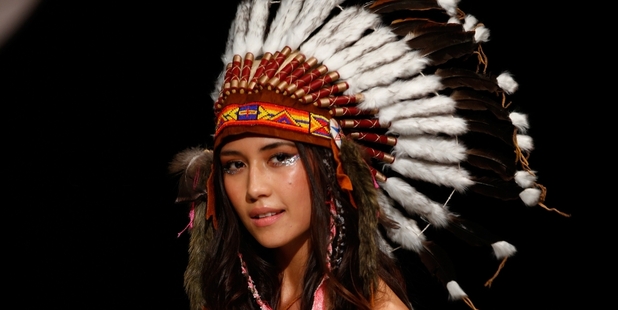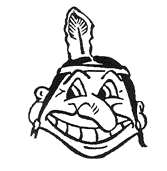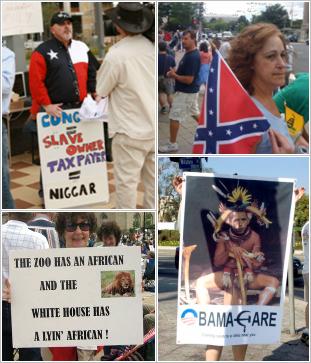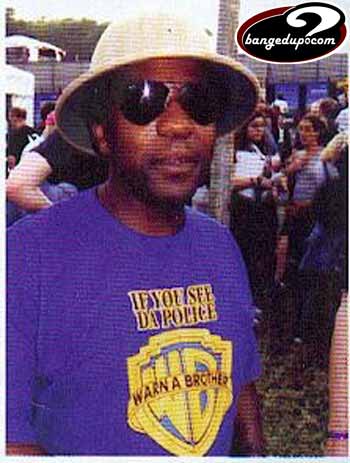Onstage, the Native American woman on roller skates appears almost naked. The Scientist and all the "normal" people in contemporary costumes are white. Laing was appalled by this "lazy" use of cultural and gender stereotypes.
Overseas reviews agree (including a couple from audience members on Cirque's official website). "The show's treatment of world cultures is alarming," says the online news site Huffington Post, noting performers are costumed "like the singing dolls at Disneyland's It's a Small World" ride. Canada's The Globe and Mail points out that Cirque has a history of such cringe, wondering if James Cameron's noble savage in Avatar was inspired by a Cirque show.
Poor Robert Lepage. Totem's director may have thought he had circumvented such criticism this time: reportedly, Cirque consulted with "numerous First Nations elders," and principal singer and Huron-Wendat lyricist Christian Laveau has said the show was careful not to include sacred elements.
Costumes aside, such measures seem to have at least helped. Although otherwise scathing, the Portland Monthly reviewer expressed surprise and delight "that the act I expected to find most offensive from the press photos turned out to feel like the most authentic part"--that is, the Native American hoop dancing by Eric Hernandez, already a 12-year veteran at age 22.
But the problem is that such enlightening moments are packaged into a broader arc that pits us vs them, white vs exotic, "spectacularising a cultural other," as Laing puts it. Sometimes "attempts to celebrate a culture can actually add to the harm done to that culture," if those attempts are unconsciously patronising or simply clueless. Non-Western cultures are often presented as historically frozen "add-ons" to the dynamic Western default setting.

Comment: I posted about Totem in Native Performers in Cirque du Soleil. I've seen pictures of Hernandez performing. I didn't say anything else about the show because I didn't have any more information.
But the outfits seen above--presumably worn by Shandien Larance (Hopi) and Eric Hernandez (Hopi)--are questionable. The hoop dancers I've seen don't perform as half-naked savages. They don't have strange checkered patterns on their arms, or a slash of paint across their faces. I'd say Cirque du Soleil is doing exactly what writer McAllister said: "spectacularising a cultural other."
If they performed in powwow-style regalia, they'd be less like the primitive people of countless old Westerns. The effect would be less "othering."
Normal vs. exotic
Here are some "characters" from Totem:
The Amerindian Dancer
The young Amerindian dancer takes us into a magical world, tracing the history of the evolution of species with his rings.

The Tracker
Environmentally conscious, a friend of the animals, he guides and assists the Scientist in his explorations. Angered by the thoughtless, polluting actions of a clown, he transforms before our eyes into a Toreador.

The Scientist
A Darwinesque Explorer who visits the different worlds of the show. In his advanced laboratory, aided by his assistants and a monkey, he dazzles us with his amazing physics experiments.

Clown Misha
Misha, a practical man, is wary of fuss and extravagance. He finds a silver lining (or a steel pot) for every situation life throws his way.

Hmm. Two white guys wearing more-or-less normal clothes. Two brown guys in exotic "tribal" costumes. Even if the Western guys are causing the problems and the non-Western guys are solving them, that's stereotypical.
Does Totem understand that Natives are on the leading edge of environmental issues: politically, legally, economically, culturally, and scientifically? They aren't just dancing to confront climate change and related issues. Because they're modern people, hey're conducting studies, filing legal briefs, and developing strategies on the Internet--just like everyone else.
In any show, if the characters from Africa, Asia, and other non-Western places wear colorful costumes and do colorful dances, that's a problem. There's no reason the Western characters should look and act modern while the others wear "ethnic" costumes and perform "tribal" rituals.
Indeed, you could make a whole show out of oddball Americans from a Coachella music fest, a Sturgis bike rally, or a Tea Party protest. These would be as representative as the usual stereotypical world characters: sombrero-wearing Mexicans, Hindu snake-charmers, Japanese geishas, et al.
















